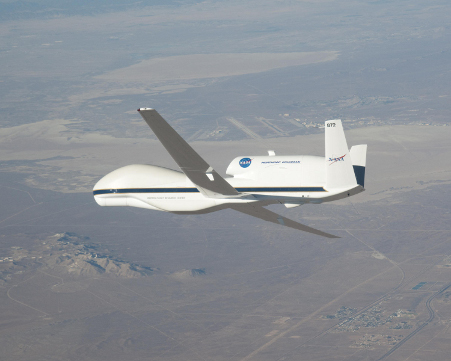NASA sent its unmanned aerial vehicle called Global Hawk on its first science flights this week to conduct global warming research. It took a 14-hour trip north to Alaska from California on Monday, and followed that up with a 24-hour trip on Tuesday to Alaska again, west to Hawaii and then back to the Dryden Space Flight Center at Edwards Air Force Base, Calif.

NASA sent its unmanned aerial vehicle called Global Hawk on its first science flights this week to conduct global warming research. It took a 14-hour trip north to Alaska from California on Monday, and followed that up with a 24-hour trip on Tuesday to Alaska again, west to Hawaii and then back to the Dryden Flight Research Center Dryden Space Flight Center at Edwards Air Force Base, Calif.
NASA has three Global Hawks, all hand-me-downs from the Air Force. The space agency outfitted them with 11 scientific instruments to conduct atmospheric research. The NASA Global Hawk carries more than 1,000 pounds of scientific gadgets, can operate at altitudes up to 65,000 feet and stay aloft for 30 hours while flying a distance of more than 12,600 miles.
"No other science platform provides this much range and time to sample rapidly evolving atmospheric phenomena," said Paul Newman, co-mission scientist for the Global Hawk and atmospheric scientist from NASA's Goddard Space Flight Center in Greenbelt, Md.
Newman told the BBC that the opportunity to use the Global Hawk stoked his "scientific lust" because it will "enable us to do things that we could only dream about."






